1. Introduction
[1.1] Author's notes (A/Ns) are paratexts of fan fiction on a variety of web pages, within multiple fandoms, and even original works published online. In this article I want to analyze the differences between the A/Ns published on FanFiction.net (ff.net) and Archive of Our Own (AO3) in Harry Potter fan fiction in Polish to find out to what extent A/Ns are influenced by the sites' architectures. Choosing the international sites allows for further comparison with a language as a variable. Choosing Harry Potter as a fandom allowed for a significant number of works—it has the highest number of Polish fan fiction works among the most popular fandoms on both sites.
[1.2] On ff.net, A/Ns are technically part of the chapter text that is uploaded as a text file. It is possible to edit it through Document Manager on the site, but the author needs to replace the older file with the edited version. In the context of A/Ns, it's important to notice that among the tags, the author chooses one or two genres and up to four characters that can be divided into one or two pairs; a pair can have more than two characters. In both cases, they are choosing from a list—genres has twenty-two categories, characters over 400, including Original Character. Readers react to the chapter by reviewing it (logged-in users once per chapter, unlogged users without such constraint, although the author may decide to moderate their comments) and faving the story or author (which causes it to appear on the reader's profile where it can be viewed by others).
[1.3] On AO3, A/Ns can be written separately in the appropriate boxes on the posting page, but sometimes authors add to the chapter text. The author may add one note at the beginning and at the end of the entire story and of each chapter, although that option appears only after posting the first chapter. In all cases, the texts can be added and edited through tools available on the site. Authors may add characters, relationships, and other tags that describe their work. The author may choose a tag from a drop-down list of canonical tags (it appears after one starts typing), but they can also create their own, including writing in a language other than English. The author can gift their work to another fan, which results in "for X" added after the "Title by Author" header and a note "For X" above the work's A/Ns. They can link it to other fics in various ways: by adding it to their own series (visible below the summary while browsing fics and below the note at the end of the entire story); by connecting it to a work through "Inspired by" or linking the original version if it's a translation, which adds a formulaic text to the first A/N. Readers can comment multiple times, even creating comment threads with the work's author or other fans (the author can moderate or disable comments in several ways), click a button to add kudos (the names of registered users who gave kudos appear under the text), and bookmark the work (the fic appears on the reader's account, and they may add additional description or tags to it).
[1.4] A/Ns were collected manually between July and December 2022, using the archives' internal search engines. The data consists of all the A/Ns published on these archives in Harry Potter fandom between 2011 and 2021, including works in progress if they weren't updated in 2022 to ensure the data wasn't changing in the collecting period. On ff.net, I chose works in Harry Potter fandom tagged with Polish as their language and included mature works. On AO3, I logged in to include works unavailable for unregistered users. I chose works tagged "Harry Potter—J. K. Rowling" as the fandom, had Polish as the work's language, and were last updated before December 31, 2021.
[1.5] I gathered 2,906 works published on ff.net and 1,799 on AO3. AO3 is the younger archive, and it gained more popularity in Polish HP fandom around 2015. Until 2018, ff.net was the more popular of the two archives. This also explains the differing number of published fics on these sites; the higher popularity of AO3 occurred during a general decrease of interest in HP fandom among fans that chose to publish on one of these sites (figure 1).
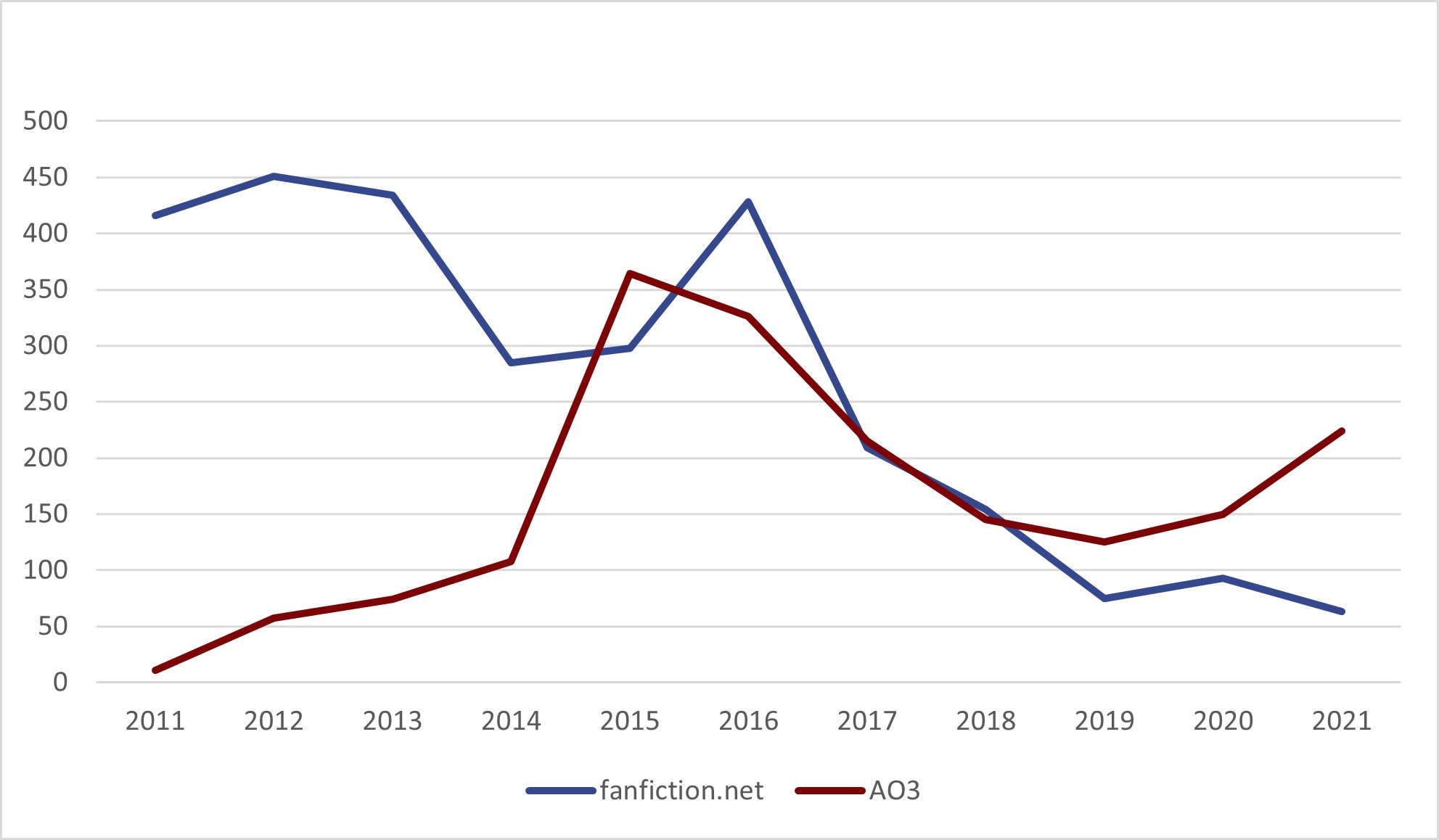
Figure 1. Number of works in HP fandom published on FanFiction.net and Archive of Our Own.
[1.6] For the purpose of this article, I define A/Ns as the paratext accessible only on the page of the works themselves. This definition excludes work summaries on both archives—while including chapter summaries on AO3—as well as dedications and information about being part of the series on AO3 because all of them are part of the work blurb visible while browsing the site. Additionally, in the case of translations, I excluded the part of A/Ns that were translations of original A/Ns. There are 1,834 fan fiction works with at least one A/N on ff.net and 1,219 on AO3 (63% and 68%, respectively). I did not seek the permission of the authors because of the statistical approach of this analysis. Accordingly, I do not quote specific texts.
[1.7] The base for my content categories is Karl Bühler's organon model of language (2011, 34–37). He outlined three functions of language, depending on whether the focus of the communication act is the sender, the receiver, or the objects and states of affairs. A/Ns are an act of communication between the fic author and their readers, and I divided the content of the gathered texts into three main categories corresponding to Bühler's division: the fic author, the reader, and everything else. The significant difference in my approach is that I was not trying to find the main focus of specific texts but the frequency of appearance of certain types of information corresponding to those three categories. Bühler's model, therefore, serves as a frame to organize the findings in an easily reproducible manner.
2. "I will not abandon this fic"
[2.1] I will start with notes that contain author-centric segments (figure 2). I exclude from this category any repetition of the author's name used either as a part of a second header or as a signature. There are 779 fics on ff.net and 304 on AO3 with A/Ns at least partially focused on the author (42% and 25%, respectively).
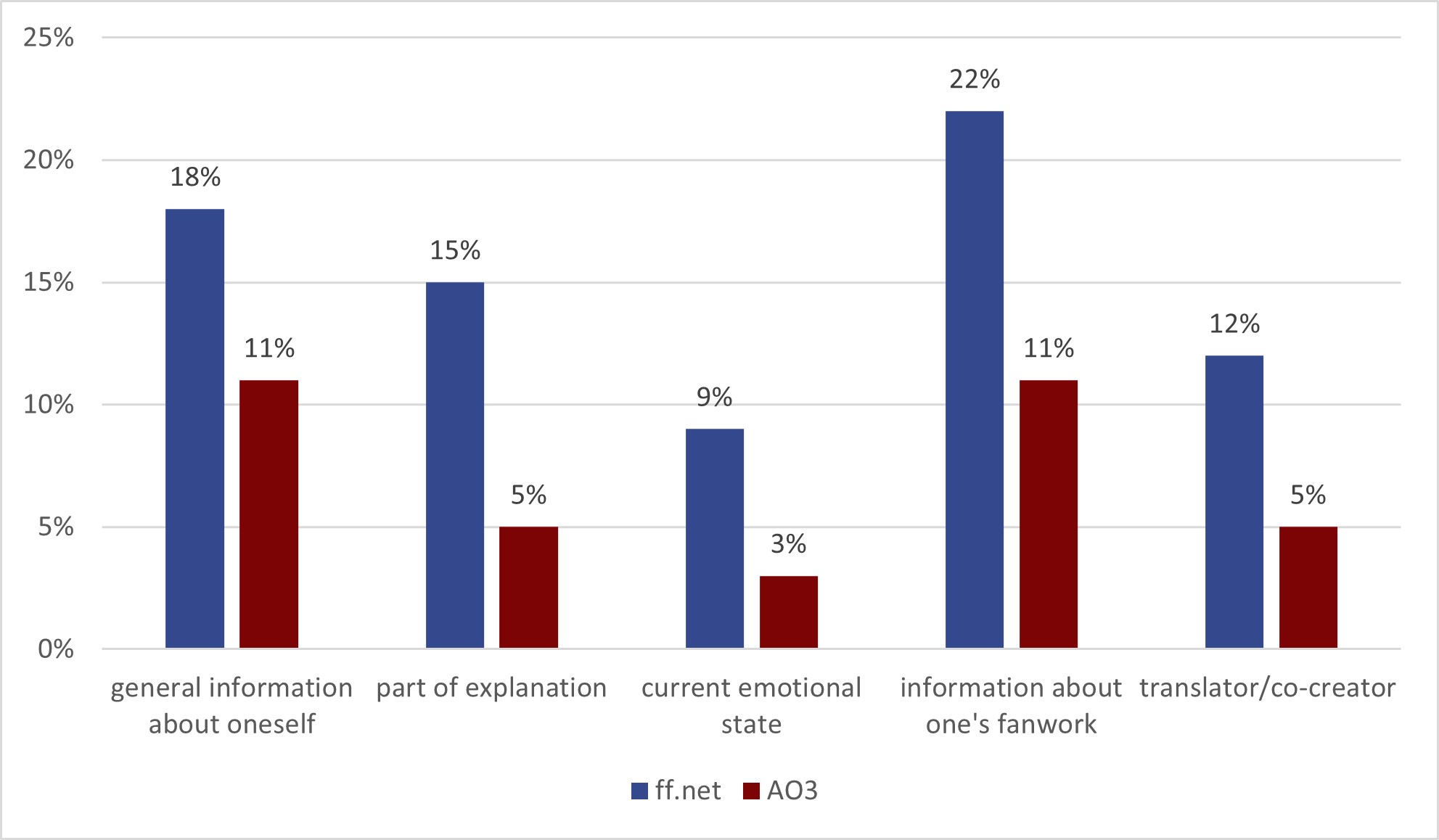
Figure 2. The frequency of types of author-centric content.
[2.2] On both sites, the majority of author-centric information focuses on presenting the author as a fan fiction writer (22% on ff.net; 11% on AO3): future or current fan fiction plans; how one writes, translates, or publishes; and other, already published fan fiction works, usually also in Harry Potter fandom. The two latter types of information appear with similar frequency on both archives, while sharing one's plans is more often part of A/Ns on ff.net. This is partially explained by the fact that a sizable portion of these plans are author declarations that they will not abandon their fic, usually posted as an answer to readers' questions about the next update. The higher frequency of such promises on ff.net is caused by the lower percentage of multichaptered works on AO3 than on ff.net (32% and 47%, respectively) and, to a lesser degree, the fact that authors on ff.net can respond publicly to readers' comments only through A/Ns, while on AO3 authors can respond to others in the comment section under their fic.
[2.3] A significant difference is visible in the frequency of sharing general information about oneself (18% on ff.net and 11% on AO3). This is not caused by AO3 users being more secretive, because the information provided describes the lives of the authors in general terms; only a handful of fics on both archives contain anything that would allow for identifying the author outside the fan community. The fact that personal information appears less often on AO3 can be partially explained by the fact that such information is shared to create a connection with the readers—and on AO3, authors can use comments to do so.
[2.4] A bigger difference is seen in sharing personal information as a part of explaining oneself (15% on ff.net and 5% on AO3). Usually, this is to excuse the lateness of the chapter or the presence of grammatical or spelling errors. Some of this difference can be explained by AO3 being the younger archive. There are more republished works, leading to fewer cases of authors not keeping to their posting schedules (note 1). Authors also feel more secure about the quality of their work since it was already published and reviewed on another platform. Another partial reason is the fact that there is a higher percentage on AO3 of works loaded as a single chapter than on ff.net, and such messages usually appear in later chapters.
[2.5] Another category is naming oneself as a translator or naming one's cocreators (12% on ff.net and 5% on AO3). Here, the difference between the percentages is caused by different options offered by the archives. While the percentage of translations is similar on both sites, on AO3 the automated "This is a translation" message is often used exclusively to mark translations and does not include the translator's name. On ff.net the translators usually write explicitly that they are translators in their A/Ns. On AO3, it’s possible to publish a work with several users as authors; therefore, this information is presented elsewhere and does not need to be repeated in A/Ns.
[2.6] The last type of information shared by authors is their current emotional state (9% on ff.net and 3% on AO3). The fact that it is most often a response to readers' comments—mostly to share the author's joy at their reaction—explains the difference in frequency between the archives. On ff.net, it has to be part of A/Ns, while on AO3, such responses appear in the form of author responses to readers' comments under the fic.
3. "Remember to leave a comment!"
[3.1] Within the gathered data, there are 1,042 fics with reader-centric segments on ff.net (57%) and 517 on AO3 (42%). It's important to distinguish here two categories of address: "you" singular (Polish "ty") and "you" plural (Polish "wy"). I consider the meaning, not the form; addressing a mass audience through singular forms to create a connection is a well-known strategy.
[3.2] Authors on AO3 tend to address all the readers in the A/Ns almost exclusively (figure 3). On ff.net, both types of address appear in a third of the notes with reader-centric segments; addressing exclusively all the readers happens in over half of such notes on ff.net. The difference explains the fact that most communicating with specific users happens through comments on AO3 rather than A/Ns. This is seen also in the frequency of types of interactions that these reader-centric segments represent (figure 4).
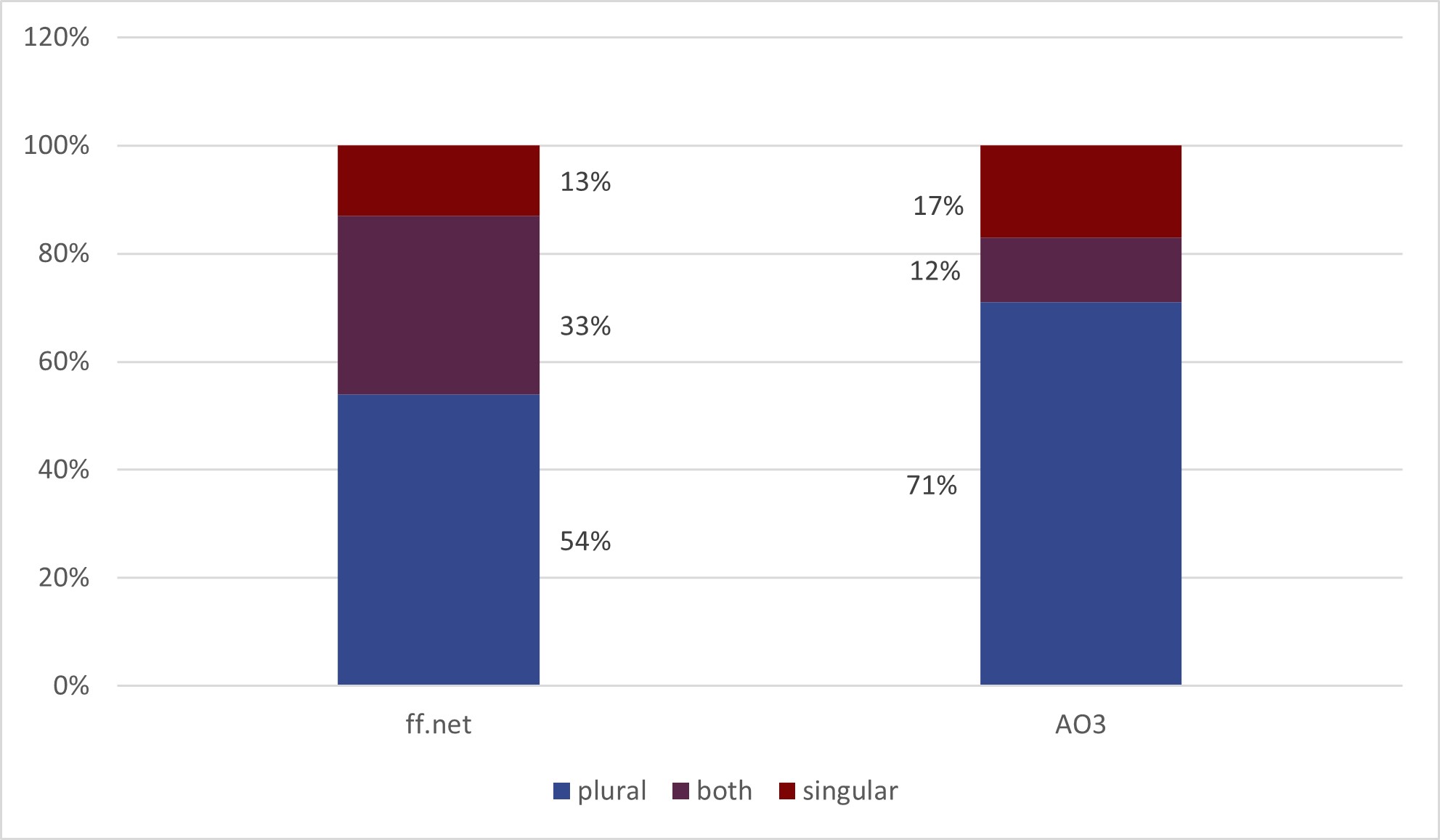
Figure 3. Distribution of singular and plural use of address.
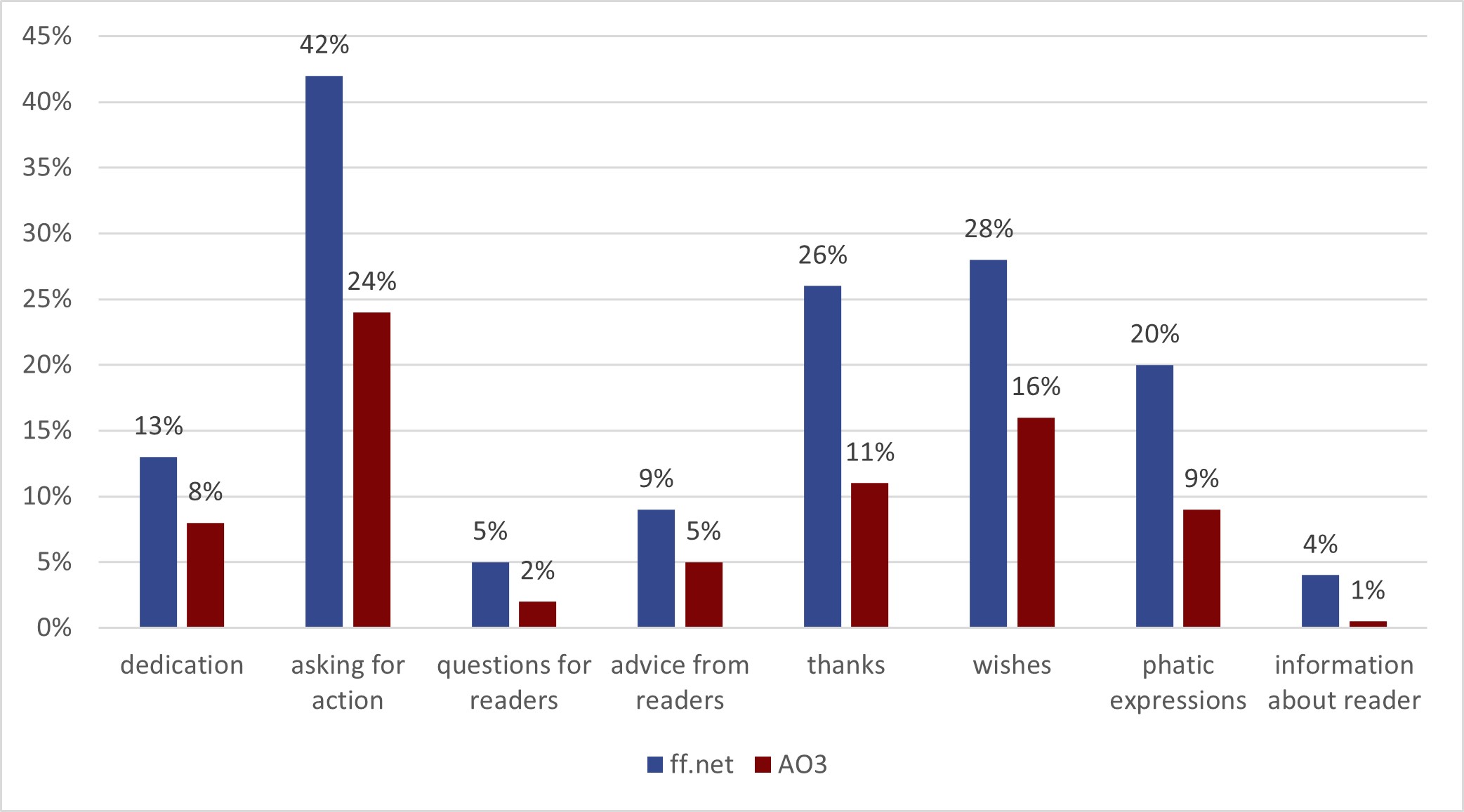
Figure 4. The frequency of types of reader-centric content.
[3.3] The most common A/Ns among reader-centric segments is the author asking readers to perform a certain action (42% on ff.net and 24% on AO3). Most often they are requests for comments (66% of all requests on ff.net and 57% on AO3) and inviting users to read the text (57% on ff.net; 43% on AO3). It is not surprising, nor is it characteristic of Polish fan fiction in general or Harry Potter fandom in particular. One reason these requests are less frequent on AO3 might be connected with the fact that on ff.net, A/Ns are uploaded as part of the chapter. Inviting users to read the text usually signals the end of the A/Ns. On AO3, the A/N box is visually separated from the fic, so such a signal is not needed. Some A/Ns asking for comments relate to the visibility of the comment box. On the mobile version of ff.net, it is a button labeled "Review," while on the desktop version, and on both versions of AO3, it is a big box under the text. The importance of the mobile version is implied by authors' commenting instructions on ff.net, which—with only one exception—describe the process of commenting on the mobile version of the website.
[3.4] Wishes, a category in which authors wish their readers something (from having fun reading the fic through holiday wishes to wishes connected with personal events), are usually connected with the text itself and the pleasure the reader might get from it. They often appear as another signal to end A/Ns; therefore, as in the previous case, the difference in frequency (28% on ff.net and 16% on AO3) is caused by the place the A/Ns have in relation to the chapter text on both archives.
[3.5] While analyzing authors' thanks, I exclude notes thanking the beta because it is a customary acknowledgment of the beta's part in creating the fic (Karpovich 2006, 174). The difference between the archives in this category (26% on ff.net and 11% on AO3) is explained better when we look more closely at what the authors are providing thanks for. On ff.net, the biggest category is thanking readers for comments (78%). The next category—thanking for reading—is only a third of them. The following three categories of thanks are under 20 percent: for following, faving, and advice. On AO3, there is no category that would dominate this segment. Authors thank their readers most often for reading (46%) and commenting (41%). They do it twice as often as they thank for kudos—a category that does not appear on ff.net. The rest of the categories frequently appearing on ff.net—following, bookmarking (the most similar to faving on ff.net), and advice—are only a few percent of the A/Ns on AO3. The general difference in frequency of this segment stems from the types of reader–author interactions available on the archives—on AO3 authors can thank for comments or advice by commenting on them—and archive–author communication. On AO3, the authors can be notified of new comments and new kudos on their work. The authors tend to respond to comments with comments of their own, and they can thank readers for kudos only through the A/Ns of the next chapter. On ff.net, the author can choose to be alerted about new reviews, their story being followed, or being added to favorites. The author can respond to them by private messages or in the A/Ns of the next chapter. This means user engagement is more visible for the author on ff.net, and they can acknowledge it publicly only through A/Ns; therefore, such segments appear more often on this site.
[3.6] The difference in the frequency of dedication (13% on ff.net and 8% on AO3) is connected with the tools available on AO3—mainly, the possibility of putting the dedication within the always visible metadata. Authors tend to use this tool, and the dedications are repeated in A/Ns only if they want to specify their reasons or in a case of dedicating specific chapters or even scenes. On ff.net, all dedications are part of the A/Ns.
[3.7] The fact that phatic expressions—used for maintaining the contact with readers (e.g., welcoming them or saying goodbye)—appear twice as often on ff.net as on AO3 can be linked with the fact that such expressions tend to be one of the signals of the beginning of the A/Ns. Such signals, as was already stated, are not needed on AO3.
[3.8] Asking for advice from readers shows the cooperative nature of fan fiction, since often it is advice about what to do next in the story or how to improve the text. Here the difference in frequency (9% on ff.net and 5% on AO3) can once again be explained by the fact that there is a higher percentage of republished and one-chaptered fics on AO3. Another reason is tied to additional options available to authors on ff.net; they have the possibility to create a poll in which logged-in users can vote. Most often the polls are used by translators to allow readers to choose their next project. The poll appears on the author's account, and in the A/Ns, the author references it. Questions for readers (5% on ff.net and 2% on AO3) and information about them (4% on ff.net and 1% on AO3) show the biggest difference in frequency. This is all because such interactions on AO3 happen almost exclusively in the comments, not partially in the A/Ns, as on ff.net.
4. "Great thanks to my beta"
[4.1] The third field in Bühler's model deals with things and states outside of the sender and the receiver—here the author and the reader. In case of A/Ns, this topic appears in 1,809 texts on ff.net (99%) and in 1,169 on AO3 (96%). Among them, the most common topic is the fic (95% of all object-centric segments on ff.net and 83% on AO3), which fits the main function of A/Ns—and paratexts in general—informing potential readers about the text (figure 5).
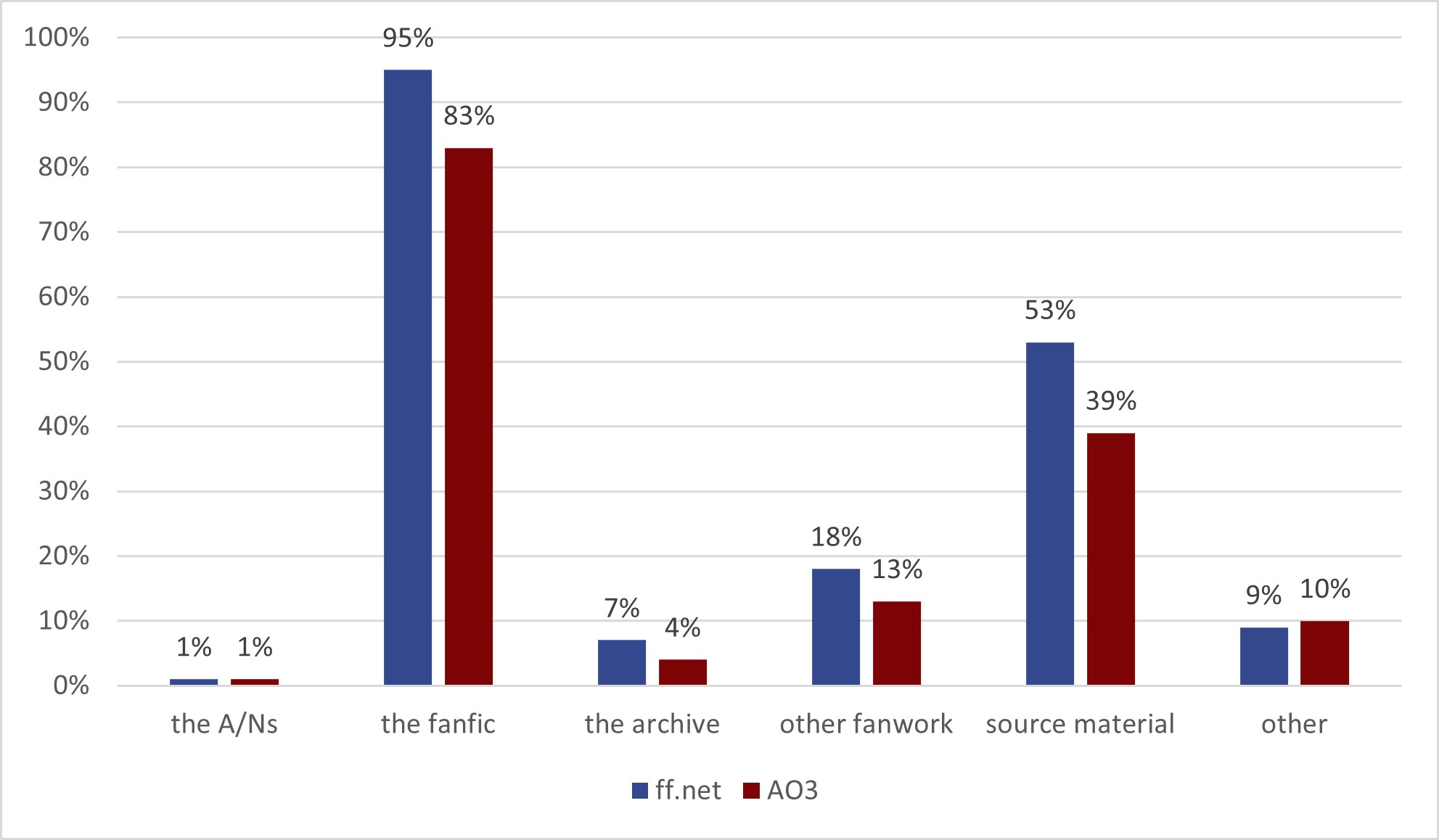
Figure 5. The frequency of types of object-centric content.
[4.2] The archive category appears rarely but almost twice as often on ff.net as on AO3. This field mostly consists of readers talking about how they use the archive or the problems they have with it. The difference is easily explained: while both sites are in English, only AO3 offers instructions in multiple languages, including Polish, about using the site. There is a forum on ff.net, but it does not appear to be used for sharing any instructions, at least not in Polish.
[4.3] The other fan works category includes the author speaking about other published fan fiction, both their own (usually in some way connected with the fic, like sequels or series the work is part of), other writers' works (excluding the source text in the case of translations), and also fan fiction in general. The difference between ff.net and AO3 in this category (18% and 13%, respectively) is connected in part with the ease of creating links between fan fiction works without the need to mention it in the A/Ns. Series of fics, for example, are more common on AO3 but are less often written about in A/Ns. On ff.net, all mentions of other works by the author are part of A/Ns.
[4.4] The biggest part of the source material category is mentions of the original text of which the fic is a translation. However, the percentage of translations is similar on both archives (25% on ff.net, 27% on AO3). The difference in this category comes mainly from the inclusion of disclaimers in A/Ns. It suggest that users posting on ff.net are more aware of the possibility of legal action from the author. It is corroborated by the archive's rules; ff.net reminds the authors in the guidelines that publishing fan fiction based on the works of certain artists "will result in the removal of stories and/or suspension of account" (FanFiction 2008), while its TOS contains instruction for copyright holders as to how to notify the archive of any infringement (FanFiction 2019). In comparison, AO3 in its TOS focuses on establishing guidelines for transformative and legal use of copyrighted materials (Archive of Our Own 2018).
[4.5] Although information about the fic appears with similar frequency on both archives—especially considering how often they are included in A/Ns—there are significant differences in the specific types of information shared about the fic (figure 6).
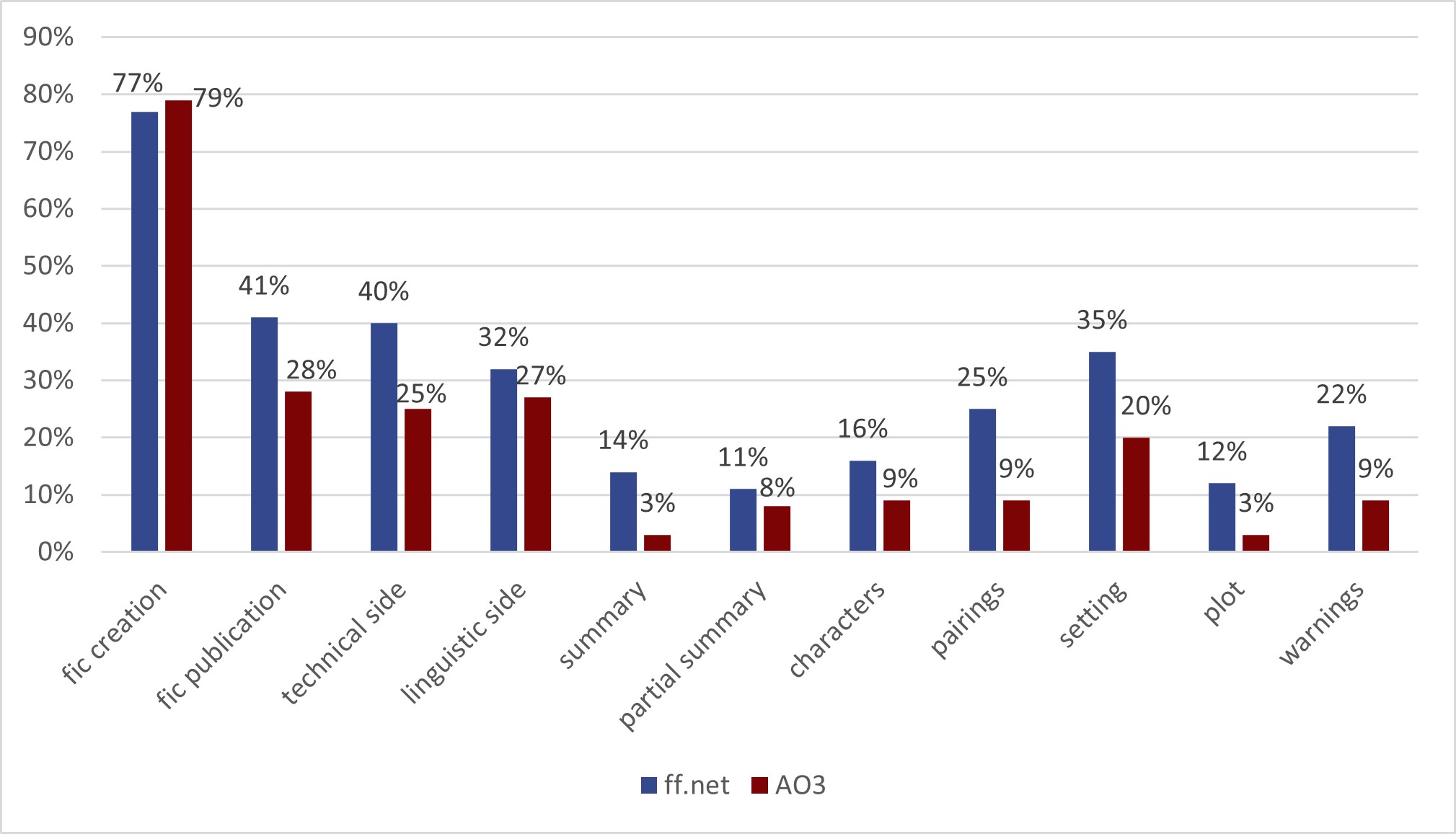
Figure 6. The frequency of types of fic-centric content.
[4.6] Among information that authors share about fic publication (41% on ff.net and 28% on AO3), the difference stems from two categories that are included thrice as often on ff.net as on AO3: news about when the next update will be posted and a general utterance that this is a new chapter. The difference in the former category is caused by the larger percentage of works posted as a single chapter on AO3. In the latter, it's caused by the fact that such messages are one of the markers to delineate A/Ns and chapter texts on ff.net, although not one of the most popular ones.
[4.7] The technical side of the fic represents information about its length, general reception, edits made to previous chapters, and explanation of significance of some formatting choices. In all those cases, that type of segment appears roughly twice as often on ff.net as on AO3. It is hard to find an explanation for this that would connect to the archives. On both sites, the number of chapters is provided automatically, and one can mark their work as finished. The main difference is that the author can denote the expected number of chapters within metadata only on AO3. It is, however, hard to say whether that influences the author in any significant way; the frequency of this information among the information about chapter length is the same on both sites. Moreover, the only way to pinpoint the importance of this function is to observe the works for some length of time, which was not how the data was collected for this article. It is certain that the difference lies in multichaptered fics; the information about a fic's chapter length in the case of single-chapter works appears with similar frequency on both archives. The fact that the information about the significance of formatting appears more often on ff.net might be connected with the author having fewer options to format the text. Therefore, in some cases, one type of formatting substitutes for another, and the author needs to inform the reader of such substitution. The difference in mentioning edits to previous chapters is caused by the larger percentage of republished and one-chaptered works on AO3.
[4.8] Good description of the setting in the tags is possible only on AO3; ff.net offers only the opportunity to choose the genre, which is not as fandom-specific. Therefore, such information appears in A/Ns more often on ff.net (20% and 35%, respectively).
[4.9] Character information in A/Ns can be divided into two categories: list of characters and descriptions of characters. Both appear more often on ff.net for different reasons. There, the list allows inclusion of more than four characters, although it is used more often as a part of an A/Ns format adopted from another site. The description on AO3 can be presented through tags. Additionally, the reason for most character descriptions is discussion with the readers. On AO3, this takes place in comments, which accounts for the higher frequency of this category on ff.net.
[4.10] Being limited on ff.net to only two romantic pairings without repeating characters within them is not responsible for the difference in frequency (25% on ff.net and 9% on AO3) of including pairings in the A/Ns: 89% of all gathered fics from AO3 had pairings within these limits. However, on AO3 the main way to inform the reader about the pairing is through tagging. Including this information in the A/Ns is repetitive; therefore, it is often omitted. On ff.net, tagging is one of three methods of marking the pairings in the work, all chosen with similar frequency: tags, A/Ns, and summary. Although there is some overlap with works using two or three of these, there are also a number of works that use only one. It is hard to explain why on ff.net tagging isn't the dominant method based on A/Ns. It's possible that authors on ff.net do not consider the site's way of presenting pairings—characters' names are displayed in a square bracket—distinctive or recognizable enough for their readers.
[4.11] The warnings category includes only topics that the author explicitly warns their readers or apologizes about. The difference in the quantity of warning within the text of A/Ns (22% on ff.net and 9% on AO3) can also be attributed to the difference in tagging systems between the two archives: it is possible to include them in the tags only on AO3. On AO3, these categories appear in the tags mostly in a neutral fashion.
[4.12] The significant difference in percentages of including the work's summary within the A/Ns (14% on ff.net and 3% on AO3) has a few reasons. On ff.net, the character limit is 384; on AO3, it's 1,250. On ff.net, 11 percent of all summaries are expanding upon the material in the summary box, while on AO3 there's only one such work. Another important factor is the fact that on the desktop version of ff.net, the summary appears along with metadata at the top of the page, but on the mobile version, only the metadata appears in that place. An important reason for including fic summary in A/Ns on both archives is repeating the form of A/Ns from other sites that were not created to publish fan fiction.
[4.13] I omit categories that appear with similar frequency on both archives, but I make an exception for partial summaries (11% on ff.net and 8% on AO3) because one would expect more of those on AO3 than on ff.net. Even taking into consideration only multichaptered works—the percentage of which is bigger on ff.net—partial summaries still appear slightly more often on ff.net (23%) than on AO3 (21%). That's because in the Polish fandom of Harry Potter on AO3, authors tend to use "Chapter Summary" and "Author's Note" interchangeably. It shows that authors' habits from other fan fiction publishing sites play an important role in how they use tools on the new site.
[4.14] Last in this category is the plot. Authors discuss the plot of their fics almost four times as often on ff.net as on AO3. The reason for the difference is twofold: the presence of tags that could describe a work's plot on AO3 and the fact that such topics appear frequently as the response to readers' theories and questions, which are usually answered in comments on AO3 and in A/Ns on ff.net.
5. Conclusion
[5.1] The content of A/Ns, while clearly connected with the site the fic is published on, is also influenced by other factors. Among them are authors' habits from publishing elsewhere (especially in case of republished fics) and their ability and willingness to use new tools. Within these two archives, however, the most crucial factors influencing the content of A/Ns are a richer tagging system and the possibility to respond directly to the comments on AO3, with the latter influencing not only reader-centric segments but also author- and object-centric ones. Other important factors were the length of fics, the archives' rules, and types of notifications.
[5.2] The position of A/Ns as a text available only with the fic texts means they play a secondary role as a source of information about the text, usually containing information that for whatever reason couldn't be published elsewhere. Similarly, its function as a place of connection between author and their readers applies mostly to the one-to-many types of contacts, with one-to-one communication happening elsewhere when possible. This explains why A/Ns on AO3 are usually shorter and more often monothematic, as seen in the fact that almost all types of segments appear more often on ff.net than on AO3. Creating connection with the readers and informing them about the fic is at least partially fulfilled on AO3 by author's comments and tagging.
[5.3] It would be interesting to see to what extent these findings are universal and what other differences are present when one analyzes A/Ns in a different language, since the specificity of Polish language and culture does not appear to play any significant role in these categories.